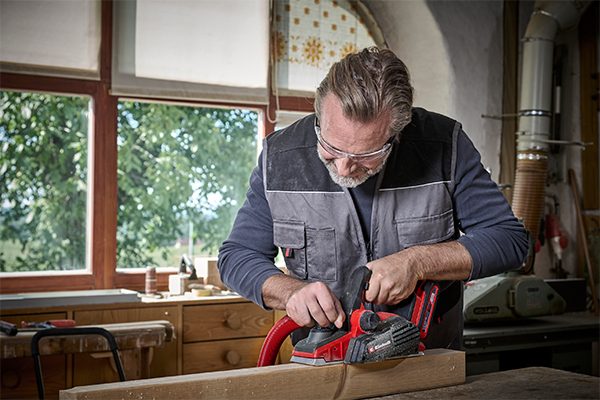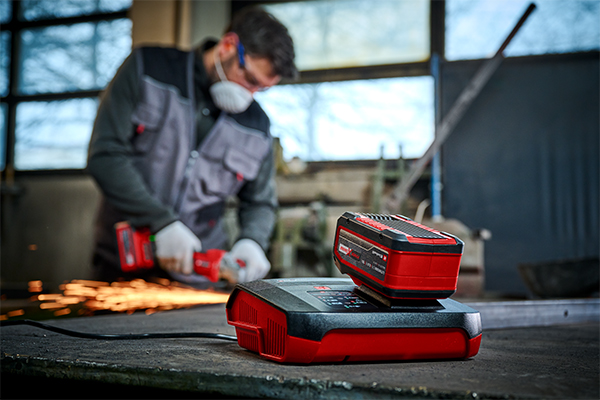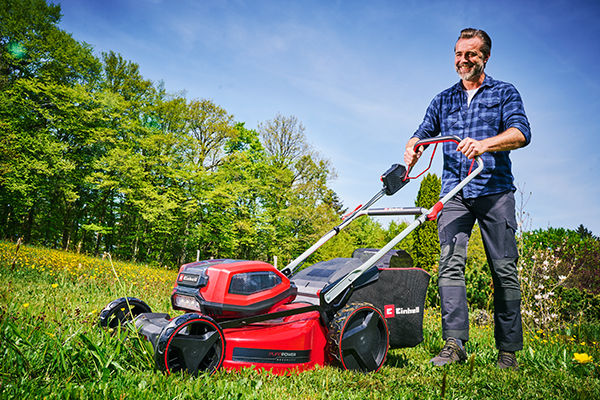Safely through the winter: What you should know about shovelling snow and the duty to grit
Who doesn't wish for a white Christmas and a winter wonderland right on time for the end of the year? As much as the first snowfall may create a beautiful and contemplative atmosphere, it also brings additional work on the streets. While snow is eagerly anticipated by winter sports enthusiasts on the slopes, winter services are gearing up for their operational efforts during the cold season. However, property owners and tenants also anticipate some responsibilities and tasks.
Who should reach for the snow shovel and, above all, when and where clearing is necessary, you will find out in our blog post. We will also explain what can happen if you neglect your responsibilities and which tools can make the strenuous task of shovelling snow easier for you.
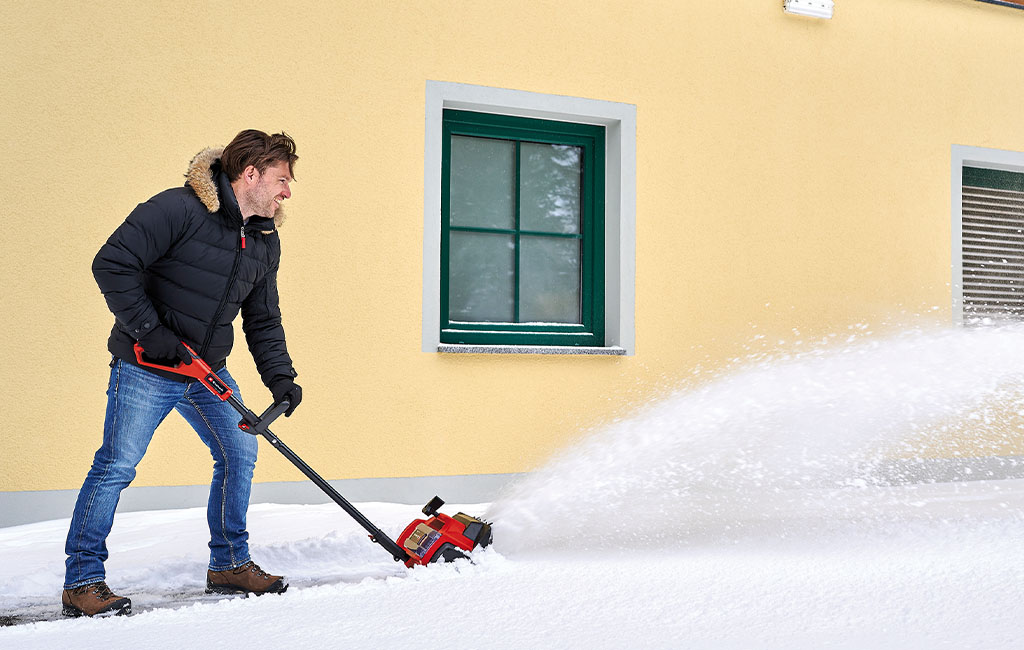
Snow clearing: Who is obligated to do what and when
Clearing the heavy snow from the driveway is not a pleasant task, especially in freezing cold and heavy snowfall. However, ultimately, you need to get your car reasonably safely onto the road. But did you know that in Germany, you may be legally obligated to clear certain areas and paths of snow? Depending on whether you are a tenant or owner of a property, snow clearing and gritting duties may apply to you. The purpose of these laws is ultimately the so-called duty to ensure traffic safety. The goal is to make certain paths safe for all road users – whether pedestrians, cyclists, or drivers – to protect them from the risk of injury. In the end, this ensures not only your safe passage to your front door but also allows the mail carrier to deliver your packages without slipping along the way.
Who is obligated to clear snow?
On public roads, sidewalks, and areas, the winter service of your municipality is responsible for clearing and spreading salt. However, there are exceptions, especially for certain areas directly adjacent to private properties. The snow clearing duty may apply to the following individuals:
- Owners: Owners of land and houses are not only responsible for clearing the paths on their own property of snow and ice but also sidewalks directly adjacent to the property.
- Tenants: Whether a tenant is responsible for winter services or if it is, for example, taken care of by the caretaker is usually determined by the landlord in the house rules or the lease agreement.
Where exactly does clearing need to be done?
To ensure that you can travel from A to B with the least risk possible, the winter service takes care of cleared roads. You only need to use a snow shovel on your own property and the directly adjacent areas. The exact locations and width where you need to shovel snow are regulated by each municipality in an ordinance. Therefore, it's best to inquire directly with your local community about the applicable rules.
In many cases, these ordinances are similar, usually stipulating that every property owner must clear and grit the public sidewalks directly adjacent to their property. These pathways should allow two people to pass each other, so the cleared path should be at least 1 meter wide. On paved sidewalks, a width of 1.20 meters is often mentioned, while for a sidewalk directly adjacent to a road, a 1-meter-wide strip is usually sufficient. In larger residential complexes, pathways from the front door to parking lots, trash bins, and mailboxes should not be overlooked. Typically, a half-meter-wide strip is adequate in these areas, depending on the specifications in the municipal ordinance or house rules.
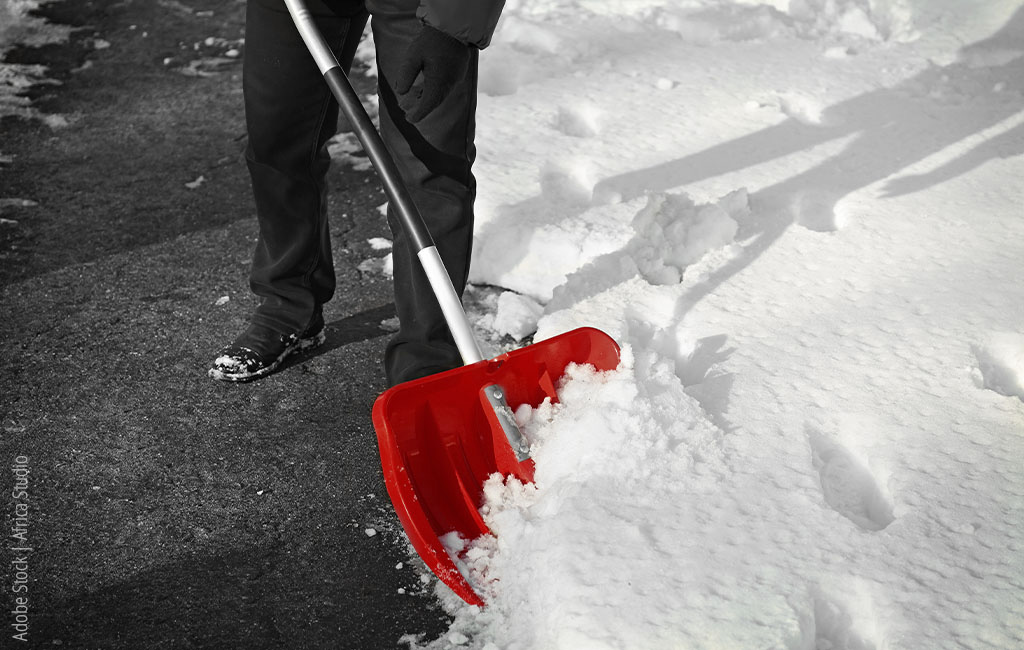
When does the snow need to be removed?
Also, at what time the snow must be cleared is generally specified in the aforementioned ordinances of the municipalities. Especially during the day, sidewalks and roads must be safe, so the duty to clear snow usually exists between 7 a.m. in the morning and 8 or 9 p.m. in the evening. If the owner is aware that the sidewalk in front of their house is frequently used outside of these hours, for example, because it leads directly to the nearest bus stop, they should ensure that the path is cleared of snow and ice early enough – even before 7 a.m. in the morning.
At night or during continuous snowfall, you don't have to shovel snow, but you should do so as soon as possible after the snowfall has stopped. If it snows over many hours, you should clear the snow at reasonable intervals. This way, you won't have to shovel large amounts of snow at the end of the day.
Consequences for Neglecting Responsibilities
In general, the duty to clear snow is primarily about ensuring traffic safety. This means that if a pedestrian is injured on the slippery side walk in front of your house because you haven't cleared and salted it adequately, you bear partial responsibility and are liable for the damage. This can result in claims such as compensation or pain and suffering, as well as specific fines depending on the respective federal state.
For your own safety and that of everyone else, you should diligently clear smooth pathways and particularly hazardous areas on and around your property of snow and ice. If you are on holiday or ill, it is also your responsibility to ensure that someone takes on these tasks for you. Whether it's a neighbour, friend, or a paid winter service, is, of course, up to you.
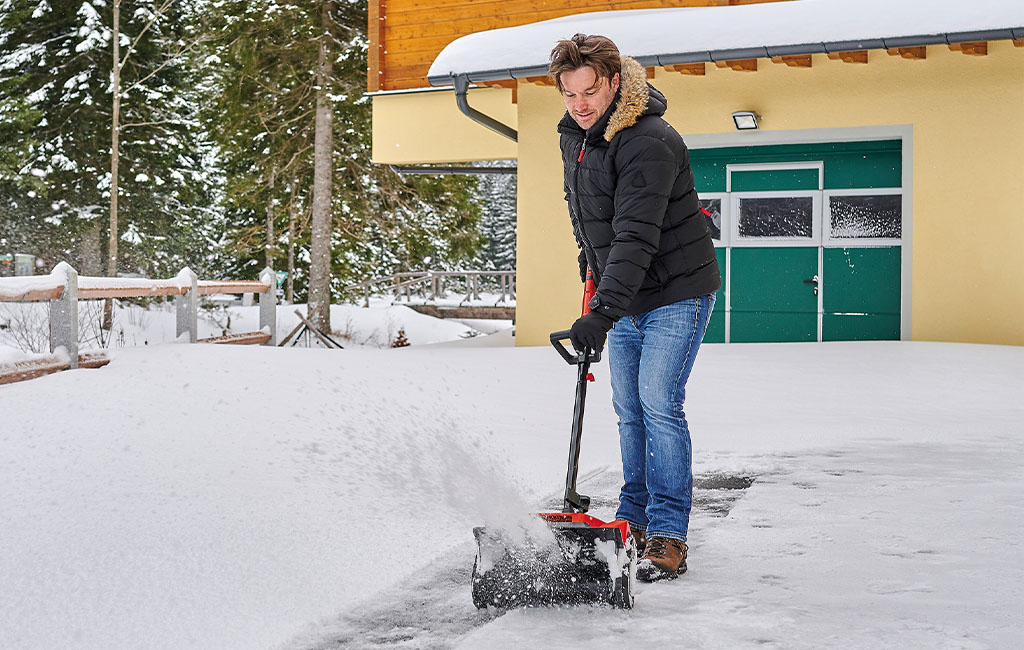
Snow Shoveling: Here's How It's Done
Snow Clearing Instructions? You won't really need them because, in essence, it's just about shoveling snow from sidewalks and streets to areas where it doesn't cause any further disruption. The sun then contributes by gradually melting the snow into water, allowing it to drain away. However, we have summarized for you what you should still pay attention to and which tools can assist you in this sometimes strenuous task.
Where to put the snow?
The best option is to find a small space at the edge of your property or in the garden where the snow pile won't cause any further disruption. Just make sure not to clear the snow onto the public road or onto drains and manhole covers. These should always be kept clear to prevent flooding and damage to the shafts.
Snow shovel, broom, or snow thrower?
Which tool to use for snow removal often depends on the nature of the snow. If it's just dry powder snow on smaller surfaces, it can usually be swept away with a regular broom. However, when dealing with wet snow, the most common choice is the classic snow shovel. These come in countless variations, differing in size, material, shape, and colour. Ultimately, all shovels serve the same purpose. However, when larger amounts of snow need to be cleared, the work with a broom and shovel can become physically demanding. It's easier with a snow thrower.

Extra Tip
Cordless Snow Thrower as Powerful Assistance
The Einhell Cordless Snow Thrower GE-ST 36/40 Li E clears the snow using the power of a 36V battery. It has a clearing width of 40 cm and can be used for snow heights of up to 20 cm. The snow blower throws the snow up to 6 meters away, and you can adjust the direction to the left, right, or straight ahead.
For optimal use, you should adjust the speed to the nature of the snow and use at least two 4.0 Ah Power X-Change or larger batteries. Have spare batteries ready for longer sessions, but please do not store them outside in the cold!
Gritting obligation: slippery roads as a potential cause of accidents
In addition to the duty to clear snow, municipal ordinances often mention a gritting obligation. This means that, in addition to clearing snow, you must also ensure that no black ice forms on the areas you have cleared.
What can be used for gritting?
In the past, de-icing salt was commonly used to prevent black ice. Today, many ordinances state that de-icing salt should only be used in exceptional circumstances, such as freezing rain or on dangerously slippery areas like stairs, ramps, or steep inclines. To protect the environment and animals, most municipalities recommend opting for other spreading agents like grit or sand.
- By the way: If there is expected to be particularly slippery conditions overnight, for example, when weather services warn of the risk of black ice, you are also allowed to spread grit preventively.
Useful Helpers: Cordless Spreader and Gritting Cart
Armed with a bucket of spreading material and gloves, you can, of course, spread grit, sand, or salt by hand. However, you will also find practical helpers in our range for this, such as the Cordless Universal Spreader GE-US 18 Li. Used in the summer for fertilizer and lawn seed, it can assist in spreading grit during the winter. It holds up to 3.3 liters of spreading material, and the speed, spreading width, and amount can be adjusted directly on the device. For larger areas, the Multi Purpose Spreader GC-SR 12 with its 12-liter capacity is also suitable.
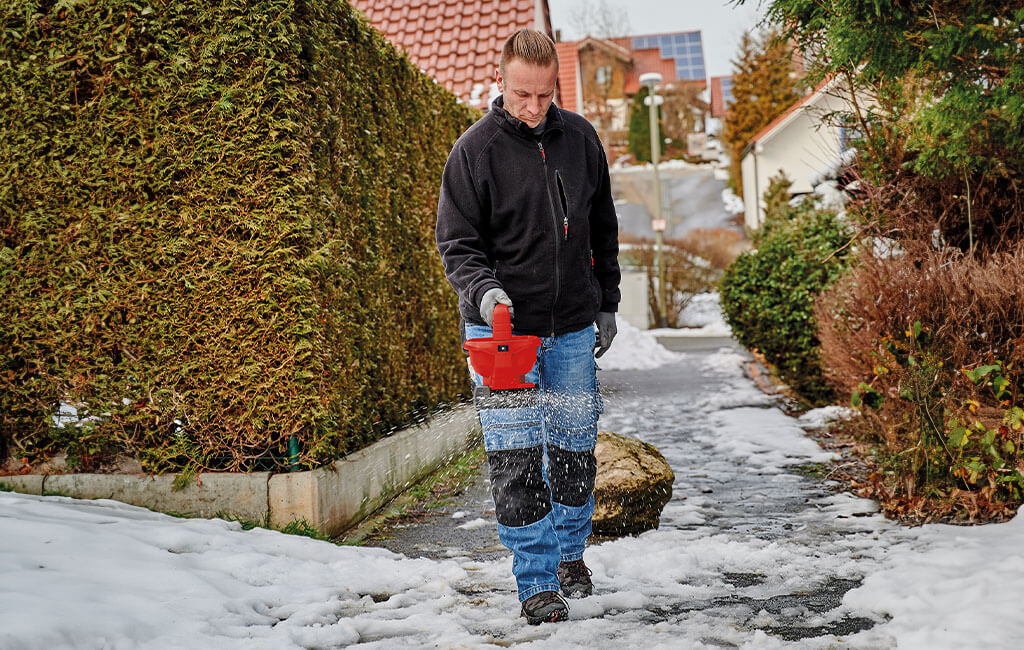
Extra Tip
Cordless Lamp for Optimal Visibility in the Dark
In winter, the days are short, and the nights are even longer. For sufficient visibility during early morning or evening snow shoveling and gritting, our cordless lamps could provide a solution. The Cordless Lamp TE-CL 18/2500 LiAC can illuminate up to 640 meters in two brightness levels and can even be fixed to a tripod or hung up.


